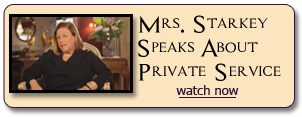When Principals have multiple homes in need of oversight, management, operational staffing, financial budgets and security, it typically falls under supervision of the Estate Manager in cooperation with the Family Office. One might believe that the same standards that are adhered to at the Principal’s primary residence will also stand for the other homes. This is generally not the case. Each home has been purchased for an area lifestyle, overall purpose, location, size and frequency of use by the Principal or Guest.
It may be an original family home one of the Principals has inherited, or in which they grew up. It may be a home or condo in the mountains, by the ocean or in a home town. It may be provided to parents, grown children, extended family members or close friends as a retreat. It may be rented out during high seasons for additional income or left uninhabited for the strict personal use of the Principals. I have seen entire second homes as estates that have multiple historical structures on hundreds of acres that hold the family’s hobbies such as a regulation hockey rink, collections such as historical dinner ware, fine linens, art, or crafts indigenous to an area or culture, used for corporate gatherings or just valuable land held for long term investment purposes.
 A Starkey Certified Estate Manager would be well advised to look at the following outline of questions to be answered and placed in a written Service Plan for overall management and care of each home and property. Answer each question:
A Starkey Certified Estate Manager would be well advised to look at the following outline of questions to be answered and placed in a written Service Plan for overall management and care of each home and property. Answer each question:
1. What is the primary purpose for each residence? Think in terms of descriptive adjectives such as “for principal’s family rest and relaxation”; for parents to live and be cared for in close proximity to the Principal’s primary home; for business members to gather for private “think tank” meetings; for Family Foundation purposes for inner city children to experience fly fishing, horseback riding or mountain camps; ranches for paid guests wanting to experience country living; religious retreat centers to support the Principal’s faith.
2. Based upon its use, learn what Service Standards will be adhered to. Go through all of Starkey’s ten Service Standards with your Principal to learn the experience they would like all those using the homes to have. Be sure to note that Principals and Guests often have different culinary expectations such as fresh sea food near the ocean, deer or buffalo in the mountains, and family “comfort foods” when staying in the home in which they grew up. Families will often have special clothing they will leave at the residence. As children grow, this clothing will need to be re-purchased to fit. Clothing will also need to be cleaned and readied including equestrian wear, water skiing and diving wear, snow skis waxed with accompanying equipment well-maintained.
3. Identify what services are expected and needed so that the unique Service Standards can be provided by appropriately skilled and trained staff.  Some staff may come from the family’s primary home or special staff will be hired seasonally for use at the alternative homes. This will always include Housekeeping or Household Manager to welcome family and guests; provide bedroom turn-down, serve meals and afternoon drinks. Be sure food, clothing and amenities are in place and other services as requested. Maybe a Chef for daily meals and Entertaining support, a Boat Captain to drive, help with water sports/equipment, a Grounds and Property worker to keep the grass cut, herb or vegetable gardens attended to and flowers cared for. Paying Guests will want all or a portion of the above services.
Some staff may come from the family’s primary home or special staff will be hired seasonally for use at the alternative homes. This will always include Housekeeping or Household Manager to welcome family and guests; provide bedroom turn-down, serve meals and afternoon drinks. Be sure food, clothing and amenities are in place and other services as requested. Maybe a Chef for daily meals and Entertaining support, a Boat Captain to drive, help with water sports/equipment, a Grounds and Property worker to keep the grass cut, herb or vegetable gardens attended to and flowers cared for. Paying Guests will want all or a portion of the above services.
4. On-going Maintenance and Security for each property. Each Maintenance project should have its own budget based upon multiple estimates. The Estate Manager will need to visit each property at least quarterly depending upon whether or not there is a permanent staff member or caretaker caring for the residence. Security is required based upon location and visibility.
5. Create a household budget using Starkey’s 10 Service Standards as a Chart of Accounts for each home. Present to the Family Office and Family Principal for their edits, understanding and approval. Using Starkey’s Ten Standards Chart of Accounts makes the cost based on its use understandable for all concerned.
Alternative homes are always seen as personal, investments and assets that must be cared for on an on-going basis. The challenge of on-going care is often seen as just an occasional cleaning. Take Care of your Principal and all of their property as though it is your own.
Written by Mrs. Mary Louise Starkey
First Lady of Service
Starkey International Institute
www.starkeyintl.com

